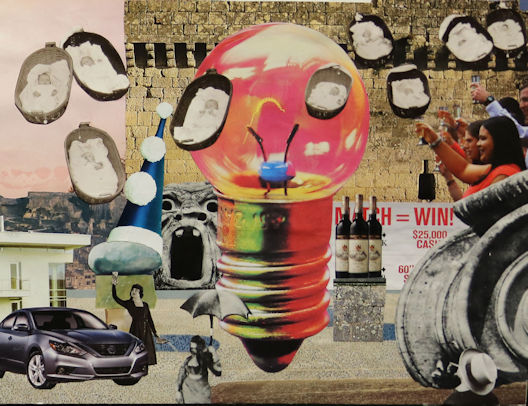 Some things we don’t care to talk about by name. It’s an old problem and one of its consequences has been fiction. Another popular solution is to fill in the gap with an animal.
Some things we don’t care to talk about by name. It’s an old problem and one of its consequences has been fiction. Another popular solution is to fill in the gap with an animal.
The monks of the middle ages, denying themselves everything a body wants, or lying about it, were the great theologians of allegory. From Animals with Human Faces, an encyclopedic investigation of what meant what: “The brute creation, like the world itself, existed solely for the spiritual edification of man. While animals shared in the Fall, they had no part in the great plan of Redemption.”
The breath of the panther is so sweet that it attracts all animals except the dragon.
The stag is the enemy of the snake.
The hyena feeds on corpses until its stomach is blown up like a drum.
In my neck of the woods, where the panther is long extinct and no one’s ever even seen a monastery, the saying goes that you’ll never see a blue jay on a Friday because that is the day he flies down to hell to give a grain of sand to the devil.
The lion’s cubs are born dead and brought to life by the gentle licking of their parents.
The lynx’s urine turns into carbuncles in seven days.
No one knows what the devil wants with the blue jay’s sand, but in all the stories that bird is good at inventing trouble and good at charming his way around it. Like as not, it is the devil doing Friday penance to the jay and not the other way around.
Certainly the blue jay’s tricks and charms would have worked on me. I’ve always had a thing for sad-eyed sonsofabitch. I’d follow a blue jay to the deserts of hell if he’d let me even try to keep up.
Up here, on the living side of earth, I watch the people falling in love catch and release doves to prove how full their livers are with the humors of passionate devotion. Suckers. Falling for a love that his no grit and songs with no bark.
The beaver, pursued by the hunter, bites off its own testicles and casts them before his predator. The beaver, pursued by a second hunter, rears upright and reveals the empty place of its old genitals.
Once the mole was a magic animal, able to predict the future. “If a man eats the heart of a Mole newly taken out of her belly and panting,” the monks said, “he shall be able to divine and foretell infallible events.”
As with humans, there was a time when the mole’s heart lived not in her chest but in her stomach. It did not beat down there, but panted.
The ram is an icon of brutal, fecund love.
The human race is descended from a wolf.
A blue jay does nothing all day but make deals and exercise his wit. A blue jay will run even the harmless chickadee back to her brush.
A widow of a copyhold tenant could keep her lands, provided she was chaste. Should it be otherwise, she could regain her rights by riding into the court of the manor backwards on a ram, holding its tail between her hands as she recited: “Here I am riding upon a black ram, like a whore as I am.”
In the beginning, mermaids were saviors and sirens were temptresses. One was a fish and one was a bird. Later their features became confused—they might all be women, part fish, part fowl, or even part horse. Any one of them might do anything.
The weasel can kill the basilisk. She has knowledge of the herb of life. She can become a beautiful girl to marry and then, at the wedding feast, revert to her animal nature and pursue a mouse.
This time when the blue jay came back, the poison oak was in bloom and bees were gathering all of the nectar. The lovers were dead and their birds all flown, honey was bitter, and his favorite berries would soon be ripe. A blue jay will make you remember you are just a person and your heart is never going to be anywhere except behind your ribs. I had had my fill. So he sat in his tree alone and barked to anyone who might bother to listen that, with himself, he was most extremely pleased.
__
Kathryn Nuernberger is the author of the essay collection Brief Interviews with the Romantic Past. Her poetry collections are The End of Pink and Rag & Bone. A recipient of fellowships from the National Endowment for the Arts, The Bakken Museum of Electricity in Life, and American Antiquarian Society, she is an Associate Professor of Creative Writing at University of Central Missouri, where she also serves as the director of Pleiades Press.
Artwork by John Gallaher

3 comments
Phyllis Reilly says:
May 21, 2018
Love your unique voice,—dark, beautiful.
Powerful images and perceptions.
And oh, the bluebird.
I loved this story.
Kathy Boles-Turner says:
Jul 4, 2018
Lyric indeed. Gorgeous!
max says:
Nov 8, 2019
massimo I totally. agree I think this story shows a lot of love and full heartedness this is an amazing. story of love fight despair and a very lyrical I love it so so much